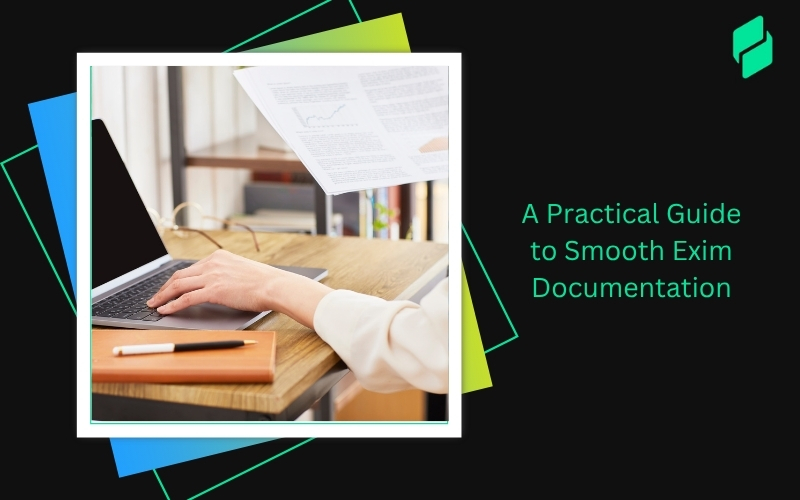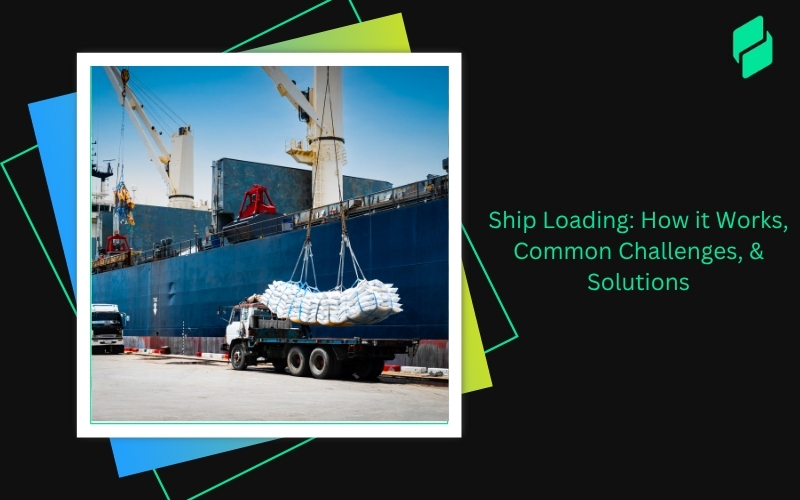Optimize your business: use unlimited savings with Pazago fulfilled now!
Get Started ->Are you ready to take your business to the global stage? Expanding into international markets through importing or exporting goods is a strategic move that can unlock incredible growth opportunities. With India’s total exports recently registering an impressive growth of 19.08% compared to the same period last year, global trade has never looked more promising.
But before you dive in, there’s one essential tool you need: the Import Export Code (IEC). Think of the IEC as your gateway to international trade. It’s a mandatory license that enables you to legally import or export goods and services, while also granting access to lucrative government incentives and benefits designed to boost your global business potential.
In this guide, we’ll take you through everything you need to know about the Import Export Code: what it is, why it’s vital for your business, and how to obtain it without the stress.
Let’s get started on your journey to global success.
What is an Import Export Code (IEC)?

The Import Export Code (IEC) is a unique 10-digit identification number issued by the Directorate General of Foreign Trade (DGFT) in India. It's a must-have for any business or individual looking to engage in international trade. Without an IEC, you can't legally import goods into or export goods out of India.
However, the IEC is more than just a regulatory requirement; it's your key to accessing global markets. It allows you to open up opportunities like securing export benefits, clearing goods through customs, and managing payments for your international transactions.
Also Read: Essential Documents Required for Smooth Import-Export Customs Clearance
Why is the Import Export Code (IEC) necessary?

If you want to trade globally, the Import Export Code isn't just nice to have—it's non-negotiable. Here's why it matters for your business:
- It's Legally Required
The IEC is a must-have document for anyone importing or exporting goods and services to and from India. Without it, customs will not process your shipments, and banks will not handle your payments for international trade. Simply put, it's your official license to trade across borders.
- It Simplifies Customs Processes
When you have an IEC, clearing goods through customs becomes straightforward. It acts as your business's unique identifier, making it easier to process shipments and avoid unnecessary delays.
- It Opens The Door To Government Incentives
The Indian government offers a range of export incentives to promote international trade. Schemes like the Merchandise Exports from India Scheme (MEIS) and the Service Exports from India Scheme (SEIS) provide financial benefits to exporters—but only if you have an IEC.
- It Builds Credibility With International Buyers
Having an IEC shows that your business is serious about global trade. It reassures buyers and suppliers that you operate within the legal framework, making them more likely to trust you with their business.
- It's Essential For Financial Transactions
Banks require an IEC to process payments related to imports and exports. Whether it's opening a letter of credit, receiving export payments, or handling foreign exchange, your IEC ensures smooth financial operations.
The bottom line? If you're serious about trading internationally, getting an IEC is the first step. In the next section, we'll cover who can apply for an IEC and what you'll need to get started.
Also Read: Best Practices for Customs Documentation and Labeling for International Shipments
Who can apply for an Import Export Code (IEC)?

The Import Export Code isn't just for big corporations. Whether you're running a small business, a startup, or even working as a solo entrepreneur, you can apply for an IEC. Here's a closer look at who qualifies:
- Businesses Of All Sizes
Whether you're a sole proprietorship, a partnership firm, a limited liability partnership (LLP), or a private limited company, you can apply for an IEC. It doesn't matter if you're just starting out or already established—if you're planning to trade internationally, you need one.
- E-Commerce Sellers
Selling through platforms like Amazon, Etsy, or eBay? An IEC is essential if you're shipping products outside India. It ensures you can handle customs and receive payments without any hiccups.
- Exporters And Importers Across Industries
From manufacturers to traders, service providers to e-commerce businesses—anyone engaged in importing or exporting goods and services is eligible to apply for an IEC.
Also Read: Top Multi-Carrier Shipping Options For E-Commerce Companies In India
What are the eligibility criteria?

The good news is that there are no restrictions on business turnover or scale. Whether you're exporting a single product or managing large shipments, you can apply. Here are the basic requirements:
- A valid PAN (Permanent Account Number) for individuals or businesses.
- A business address in India.
- A valid bank account in India is needed to receive and send international payments.
In short, if you want to expand your business internationally, the IEC is for you. Next, we'll discuss the documents you need to prepare before applying.
Documents You'll Need to Apply for an IEC

Now that you know who can apply for an IEC, it's time to gather the necessary documents. Here's a breakdown of the essential paperwork:
- For Individuals/Proprietors
- PAN Card (individual or business).
- Aadhar card or passport (as proof of identity).
- Address proof (Aadhar, utility bill, or passport).
- Bank account statement or cancelled cheque (to link to your bank account).
- For Companies/Firms
- PAN Card of the company.
- Certificate of Incorporation or partnership deed.
- Address proof of the business (lease agreement, electricity bill).
- Bank account statement or cancelled cheque.
- Digital signature (required for online applications).
With these documents, you're ready to apply for your IEC and start preparing for international trade.
Also Read: List Of Documents Required For Ad Code Registration
Steps to Register for an Import Export Code (IEC)

Fortunately, the application process has been simplified, and you can complete it online. Here's a step-by-step guide to registering for your IEC:
- Visit the DGFT Website
- Head to the official website of the DGFT (Directorate General of Foreign Trade).
- The IEC registration is available under the ‘Services' section on the homepage.
- If you don't already have one, create a user ID and password, or log in if you have an existing account.
- Fill in the IEC Application Form
Once logged in, look for the ‘Apply for IEC' option.
You'll need to complete an online form with details about your business:
- Business name and address
- Contact details
- Bank account information (for international transactions)
- Authorized signatory details
This form will capture the essential data needed for your IEC.
- Upload Documents
- After completing the form, you will be prompted to upload the required documents (e.g., your PAN card, proof of business address, bank details, etc).
- Ensure that all documents are legible and in the correct format (usually PDF or JPEG).
- Pay the Application Fee
- The IEC registration comes with a fee that needs to be paid online.
- The fee is nominal (usually around INR 500) and can be paid via net banking, credit card, or debit card.
- Submit the Application
- After reviewing your application to ensure all details are correct, submit the form.
- Once your application is submitted, the DGFT will process it. This process typically takes 3 to 5 working days.
- Receive Your IEC
- If everything is in order, you will receive your IEC certificate in your email inbox. You can also download it directly from the DGFT website.
- Once you have your IEC, you are legally authorized to begin importing and exporting goods or services.
Even with a clear roadmap, obstacles can arise. Here are some warning signs and tips for handling potential issues.
Common Challenges in IEC Registration and Solutions

While the application process is generally straightforward, here are some common issues and how to handle them:
- Incorrect or Missing Documents
- Ensure all documents are clear and in the correct format. Double-check before submission to avoid delays.
- Technical Issues
- If you face issues on the DGFT website, try clearing your browser's cache or using a different browser.
- For persistent issues, DGFT has a support helpline that can assist you.
- Incorrect Details
- Double-check the form details before submission. If there are errors, you can update your details after receiving the IEC by logging into the DGFT portal.
Now that you’ve registered your IEC, let’s examine its validity period and how to update it if necessary.
Validity and Modifications in IEC

Once you've obtained your IEC, it's valid for life. However, there are a few things you need to keep in mind:
- Duration of IEC Validity: The IEC is a lifetime registration. It doesn't need to be renewed unless your business undergoes significant changes or the DGFT cancels it.
- Updating or Modifying Your IEC: If you need to update any information (such as your business address, authorized signatory, or company structure), you can log into your DGFT account and submit the required modifications.
- Linking IEC to GST and Other Compliances: For smooth business operations, ensure that your IEC is linked to your GST registration (if applicable). Also, if your business details change, make sure your IEC is updated, as discrepancies may lead to complications with customs or banks.
How Pazago Simplifies Global Trade Operations

Once you have your IEC, managing the complexities of international trade can seem daunting. This is where Pazago comes in, offering a fully managed platform to streamline global trade operations. Here's how:
- Documentation: Pazago optimizes your documentation process, ensuring accuracy and saving time during the export-import cycles.
- Real-Time Tracking: Stay on top of your shipments with live tracking from a range of global logistics partners.
- Enhanced Communication: Pazago facilitates better coordination between traders, manufacturers, suppliers, and logistics providers.
- Quality Inspections: Before shipping, conduct quality checks on your products to ensure that they meet your standards.
- Integrated Finance and Insurance: Manage payments and insurance for your international transactions seamlessly through the platform.
Whether you're a small exporter or a large manufacturer, Pazago simplifies the complexities of global shipping, compliance, and risk management, helping you focus on what matters most—growing your business.
Conclusion
In conclusion, obtaining an IEC is the essential first step to expanding your business globally. But don't stop there. Pazago is the tool that will truly elevate your business in the international arena. It's more than just a platform. It's a partner that handles your logistics, streamlines your documentation, and ensures your global trade is compliant and efficient.
Ready to grow your business? Let Pazago take your business beyond borders with ease.


.png)








